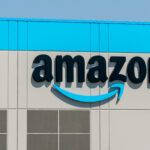California last week filed an antitrust and unfair competition lawsuit against Amazon, one day after the National Association of Wholesaler-Distributors launched a public affairs campaign urging Congress to “level the playing field.” As MDM reported on both the NAW effort and the lawsuit, the California complaint claims that the company is stifling competition and causing consumers to pay more for internet purchases. The suit also alleges that Amazon has misled other regulators in the past who have investigated the effect of Amazon’s policies on pricing and competition.
But as this week’s MDM Quicktake podcast examines, there’s no smoking gun in the allegations that will cut Amazon down to size, as much as many distributors may hope for that outcome. With the help of Indian River Consulting Group’s Founding Partner Mike Marks, we outline the details of the complaint around Amazon’s seller agreements and policies and historical distribution channel dynamics. And we try to look at the bigger picture from a distributor’s perspective.
Based on previous efforts, both Mike and I agree that this case, like a similar one last year, will probably stall in materially changing Amazon’s policies. But it will likely elevate the more fundamental underlying problems on the way all the FAANGs – Facebook, Amazon, Apple, Netflix, Google and others – are operating under archaic government regulations more than 20 years old around fair competition and digital platform monopoly regulation.
Amazon has grown its own operating issues along with its phenomenal revenue growth. As we discuss distributor moats, trust is another key differentiator for distributors that sometimes gets downplayed; Amazon is combating a fake review industry that increasingly more savvy buyers are seeing through.

I especially appreciate Mike’s comment in our discussion that Amazon is going to help distribution be looked at as an industry, because Amazon is a model for “Version 2” of distribution. “Distribution is moving up the value chain because the cost of technology has come down, customers are open to change at this point and those distributors that learn how to use analytics to make better decisions are learning how to digitize and take friction out of the process.”
The whole world looks a lot different than two years ago, and will even more so two years from now. We are in the process of distribution’s shift up the value chain, and Amazon is a key catalyst. To me, that’s the right perspective for Amazon’s innovations to serve customers. At the same time, I welcome the efforts of NAW and government agencies to ensure a fair marketplace where Amazon or other marketplaces are held accountable to not leverage their third-party seller data to grow their own share.
Listen to the conversation above, and check all our MDM podcasts at our page for them here.



